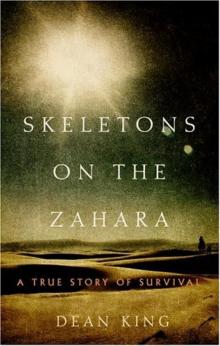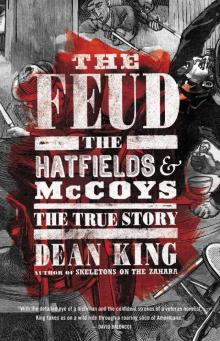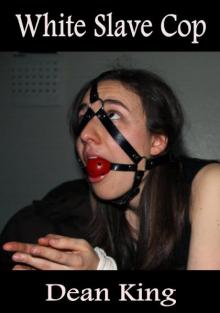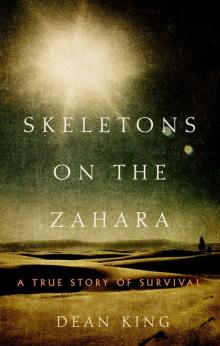The Feud: The Hatfields and McCoys: The True Story Read online
Page 30
Cap and Chafin went to the farm of one of Chafin’s uncles, Melvin Browning, on Cow Creek, arriving around dawn. They put the horses up in the barn and slept all day. That night, Chafin took the horses back home and then returned with his father a couple of days later. Cap got on Chafin’s horse, the boy riding behind him. The two said good-bye to Chafin’s father and rode across the creek to hide out.12
CAP’S JAILBREAK WAS, not surprisingly, big news. Some—like the Cincinnati Enquirer—claimed he had slain eighteen men. He was so notorious that the newly elected governor of West Virginia, George Atkinson, who had defended Devil Anse in federal court in Charleston, declared that he was prepared to send the militia to aid in the manhunt. Finally, regional had found something they could cooperate on. Kentucky’s first Republican governor, William O’Connell Bradley, who had ousted Buckner partly by criticizing his excesses, including the building of a much-needed new state prison, offered assistance. So did Governor Trip O’Ferrall of Virginia, the former commander of all the Confederate cavalry in the Shenandoah Valley, who vowed that Cap Hatfield would find no asylum in his state. Likewise, Ohio governor Asa Bushnell lined the banks of the Ohio River with armed men to prevent the fugitive from entering his territory.13
Rumors swirled regarding Cap’s getaway, but no one seemed to know that he had walked straight out the door, finding the hole he had cut in the wall ultimately unnecessary. Whether or not the fix was in—the amount of money that Cap raised indicates that it probably was—Williamson and the surrounding region on both sides of the Tug were in an uproar over the “escape.” News also spread of the excesses that he had enjoyed while in jail, embarrassing Mingo County. Angry citizens, feeling Mingo’s reputation was on the line, called for Doc Keadle’s badge. Within a day of the jailbreak, word went out that Cap was wanted dead or alive. Keadle formed another posse, with private citizens kicking in money to defray its expenses.14
On Wednesday, he and his men searched the hills again, spreading out to cover as wide a swath as possible and advancing in unison across the rugged terrain, to no avail. That night, they camped on lower Beech Creek, an old, deep groove winding through Hatfield territory to the Tug. The bright moon revealed a column of smoke up the creek. Rock Fort sat on higher ground about four miles off in that direction. Keadle’s camp spent the rest of the night abuzz and sleepless. At daybreak, the posse set off toward the fort. Fearing a trap, the men grew increasingly cautious as they approached it. Then, about a quarter of a mile before reaching it, they spotted Cap and some other men in the woods. But Cap was not in the mood for a gun battle, and he and his men bolted deeper into the forest. Ever mindful of an ambush, the posse cautiously pursued them.
Keadle decided that they must be heading for the Devil’s Backbone, a rocky pinnacle that Devil Anse had once single-handedly defended against a large Union force. (Some say this was where he actually earned the moniker Devil Anse.) The only approach was on a precipitous hemmed-in footpath wide enough for just one man at a time, which was the reason Devil Anse had been able to defeat his Union pursuers. A man with good aim could keep a small army from getting close, and there would be no way of taking Cap if he and his friends reached the point. Keadle hurried to cut them off. When the posse made it to the foot of the rise, he sent half a dozen men up the narrow path and led the rest on a longer flanking trail at a higher elevation.15
It was late in the afternoon before the first shots rang out. Keadle’s contingent reached a bald that had a view of Devil’s Backbone yet was still too far away for accurate aim, but the others got a bead on Cap and his gang as they raced to the top. Rifles cracked as both sides fired at each other. Finally, the reports ceased briefly. Through field glasses, Keadle could see that Cap was stopped below the crag and that two of the gang appeared to be wounded. The gunfire started again, and Keadle and his group maneuvered into firing range, leaves raining down on them as lead shot whizzed past. Slowly, Keadle’s other half dozen men advanced, tree to boulder to tree. They now had Cap pinned down, though it was a near thing and came with a heavy price—two deputies went down, fatally shot.
Darkness brought the battle to a halt. The reunited posse made camp and discussed its options. Some wanted to advance up the spine that night. With two already dead, others voted for a siege. Instead, Keadle bided his time. Early the next morning, the two sides exchanged fire, and another member of the posse was hit. The stalemate lasted until noon, when reinforcements led by J. H. Baldwin, a hard-nosed, commanding leader, not to mention a deadly shot, arrived on the scene. Baldwin assessed the situation and then called for two of his men to go back to Williamson to fetch what he hoped would provide the decisive edge: dynamite.
While they waited, Baldwin aimed his rifle at the enemy line. Cap and his comrades were taking every precaution not to provide a target, but that evening, when one of the gang rose a little too carelessly to get water, Baldwin had his chance; he squeezed the trigger and hit his mark.
The Baldwin men returned with the dynamite in the morning. Two hours later, they had planted the charge without being detected and were ready to light the powder train. Baldwin gave the command. The quite visible sizzling trail of powder brought matters into sharp focus. Shouting, Cap and his men chaotically leaped to get clear of their hideout, attracting rifle fire as they did so. The posse quickly downed three of them. The others jumped back into their nest as the powder hissed on. Realizing that their only chance was to stop the burning fuse, they heaved rocks at it and rolled boulders down the slope in the hopes that they could smother the flame or sever the train.16
Baldwin had not stinted on his payload. The explosion reverberated off the granite with a windblast of smoke, dust, and debris. Jagged shards of rock and splintered trees erupted in every direction. Chunks of Devil’s Backbone rained down the steep pitch as the pinnacle was mostly destroyed. Focused on the shootout, three of the posse were knocked down by the blast and injured. Some of Cap’s men, still armed and still dangerous, clung to what remained of the Devil’s Backbone; in the smoke and confusion, no one could tell if Cap was among them. Baldwin ordered his men to place another charge of dynamite beneath the crag. This time, all in the posse took cover and at a greater distance.
When the smoke cleared after the second detonation, Cap’s gang managed a convincing volley, but the explosion had destroyed what remained of the pinnacle. Baldwin had no more dynamite, but it did not matter. Cap had already vanished under the cover of smoke and dust.17
So it was told, a great story, selling newspapers and aggrandizing the feud. However, when several present-day Hatfields took me to see what they say is the Devil’s backbone, which today sits on the property of a coal-mining interest, I found it intact, looming over Ellison Hatfield Cemetery and the old Hatfield home place on Mate Creek. A subterranean coal fire, burning since the 1950s, sends smoke seeping up through fissures in the ground, making it more devilish than ever, but clearly the yellow-journalist version of the confrontation was more explosive than the factual.
Cap, however, did indeed get away on that fateful day. According to Coleman, he and his brothers Elias and Troy fled to Webster County, where Cap hid out in the Yew Pine Mountains, which were so remote that “in some places it was forty miles from one house to another.”
Once again, Cap had been blessed by fortune. His getaway was not only a success but the beginning of a new phase for him. Above all, he had managed to avoid the fate that was about to befall his brother Johnse.
Chapter 24
The Last Dance: Cunningham Gets His Hatfield
1898
Bad Frank made his name fighting Hatfields, but he had never gotten the true prize. He had failed to catch Devil Anse or Cap. Johnse would soon be captured, but not by his doing. He yearned to put the other two behind bars, yet he had often crossed legal boundaries, and for the respectable people of eastern Kentucky, such transgressions were no longer an acceptable means to an end, even one so desirable.1
A few years earlier, Bad
Frank had tried to dupe the Hatfields into believing that he had given up the fight. In the summer of 1895, he crossed the Tug to spend a day in the new town of Matewan, visiting various members of the Hatfield family and trying to convince them that he was a changed man and wished to end the hostilities. Although he was heavily armed and accompanied by two fellow fighters, he appeared to be sincere. He would, after all, soon marry Nancy Hatfield, with whom he had already sired three children—Elsie in 1889, Jesse James (called J.J.) in 1892, and Flora in 1893.
As much as they wanted to believe him, in the end they did not dare.2
So Bad Frank had given up the ruse and inevitably veered back to the conflict that had consumed him for a decade. On July 1, 1898, having recently returned from a foray in search of Hatfields, he was carousing with his friend Ransom Bray and Bray’s girlfriend near Knox Creek in Pike County. The more Bad Frank drank, the more petulant he grew, and he soon picked a fight with his friend. Bray and his girlfriend left and went to the home of an elderly widow named Ruth Hurley. But Bad Frank was not finished: he followed the pair to Hurley’s house, where he stood outside and shouted for Bray to come out. Bray had little hope of ending the affair if he did not. The arguing picked up where it had left off, with Bray trying to calm Frank down. He was not successful: Bad Frank pulled a knife and lunged at him. Bray dodged him, ran behind the house, pulled out a pistol, spun around, and shot Bad Frank in the thigh, felling him. Their fury spent, Bray carried Frank into the house and put him to bed. He had a nasty wound, and after several days, gangrene set in.3
Frank was moved to his own house, and at his request, his ex-wife Mary Rowe, the mother of five of his children, was sent for. Though Mary had no love for Bad Frank anymore, when she heard that he was dying, she reluctantly consented to go and traveled quite a distance to see him.
With a mixture of emotions, she stood over the dying man she had once promised to love and to cherish and asked, “Did you want to see me?”
“Yes,” he said. For a long time, he told her, he had believed that one of their sons was not his. He asked her now for the truth.
Mary broke down in angry tears. “Good God, Frank Phillips,” she snarled, “of course you were his father!” Then she stomped out of the room.4
Bad Frank died on July 12 and was buried at the mouth of Phillips Branch of Knox Creek on a ledge jutting out from the forest. Nancy McCoy Hatfield Phillips was left on her own to raise the three older children plus a ten-month-old baby girl, Goldie (though Nancy would be gone too before Goldie turned six).
More than four years later, the January 7, 1903, issue of National Police Gazette led off with a bulletin about Phillips: “The report of the killing of Frank Phillips, the notorious desperado, in Lawrence County, Ky., has been denied. It appears, however, that Phillips was seriously wounded in a recent fight and is now in hiding. He will probably be heard of again before long.” Although ignorant of the fact that Bad Frank was no longer in a position to be killed, the Gazette placed a fitting epitaph on his figurative tombstone: “Since 1888 Phillips has led a life possible nowhere else in the United States. Even in the wilds of the Rocky Mountains he would have been arrested or killed long since. His adventures have been innumerable, and almost always thrilling.”
Bad Frank was dead, but his reputation lived on.
IT WAS AROUND THIS TIME that Dan Cunningham showed up again. The man who had captured Cotton Top had kept a low profile since then, at least as far as the feud was concerned. He was still a deputy U.S. marshal and had served his country in that capacity for two decades now. Thanks to him, as well as Bad Frank and other lawmen, Doc and Plyant Mahon and Alex Messer were in the Kentucky State Penitentiary in Eddyville. Ironically—and, to Cunningham, tragically—nobody had put away a Hatfield, other than Cotton Top, for the crimes the family had committed. But with Cunningham still on the prowl, the Hatfields were like a man with a leaky roof: sooner or later the rain was going to get in.
Cap was safely out of sight, bootlegging on the Williams River, in the Yew Pine Mountains of central West Virginia. Nan gave birth to another child, a boy, five months after the gunfight. With three sons from her first marriage and four other children under the age of ten to look after in addition to the newborn, she retreated to Main Island Creek to be closer to Devil Anse and Vicey.5
Johnse was making his living harvesting timber along the Guyandotte River, far away from the McCoys, but soon he would find himself in Cunningham’s crosshairs. Based at Leatherwood Shoals, about nine miles southeast of Logan Courthouse as the crow flies, Johnse happened to be in a bitter dispute with Humphrey E. “Doc” Ellis, a first cousin of French Ellis and a rival logger. Doc Ellis lived in the nearby town of Gilbert and worked the same section of the Guyandotte River as Johnse did.
Cap Hatfield and his wife, Nan, with their children Coleman, LeVicey, and Shep. (Dr. Coleman C. Hatfield Collection, courtesy of Dr. Arabel E. Hatfield)
No one now knows what started the dispute, but Johnse had sworn he would kill Ellis on sight. The threat did not stop Ellis from doing whatever he was doing that made Johnse mad, nor did it dissipate Johnse’s anger. In late spring, Johnse decided to go on the offensive. Ellis must have guessed what was on his mind because he hired a gunslinger named Hopkins to act as his bodyguard.
In mid-June, Cunningham ran across Doc Ellis in Gilbert and heard of Johnse’s threat against him. “I’ve got a little business with Johnse myself,” he mentioned. “Reckon I’ll hang around for a few days.”6
Two days later, at dusk, Hopkins rushed into Ellis’s house to warn him and Cunningham that two men with Winchesters were hidden in a ragweed patch outside. He thought one of them was Johnse Hatfield.
“We’ll go out and get them,” Cunningham said. Ellis and another visitor, a timberman, insisted on joining Cunningham and Hopkins. They left the house by a back door and crept along a gully that led to the ragweed patch. With Cunningham in the lead and Ellis right behind him, they worked their way up behind Johnse and his accomplice. In the fading light they could see that Johnse had his Winchester pointed at a window in Ellis’s house.7
“Don’t reckon we’ll get him tonight,” Johnse murmured to his friend.
“Shall I shoot the damn murderer?” Ellis whispered to Cunningham.
“No,” he responded. “I want him alive,” and as the words were leaving his mouth, the deputy marshal sprang from his hiding place. Johnse wheeled around with his weapon, but in a flash Cunningham had his Winchester pointed between Johnse’s eyes, inches away. The other sniper turned on all fours and scurried off into the darkness. “Reach for the stars, quick,” Cunningham growled. Johnse dropped his rifle and put his hands up. The detective briskly relieved him of a .44 -caliber revolver and an impressive English dagger. He then left him with Ellis’s gun trained on him and dashed after the other man, whom he soon collared.
The man was Auk Damron, a convicted murderer and fugitive of the gallows mixed up with the Skean family. Following a dispute between Rich Skean and a rival named Joe Freeman, both owners of large tracts of land in Wise County, Virginia, Skean’s boys had raided Freeman’s house and shot him. Freeman survived, but later, one of the Skean boys and Damron murdered his son. They were tried and sentenced to be hanged but had broken out of jail. Nothing would have surprised Cunningham less than to learn that the Hatfields and Skeans were one link removed in crime, but he was unaware of Damron’s past and let him go.
Cunningham was more interested in securing Johnse’s arrest anyway. He spirited him out of West Virginia and to the Pikeville jail, where he collected a five-hundred-dollar reward. Johnse was eventually tried in Prestonsburg, Kentucky, for complicity in the murder of the three McCoy brothers. He confessed to his role and offered no resistance to the prosecution, telling Cunningham that he would rather be in the penitentiary serving a life sentence than outside dodging every bounty hunter who came down the pike. He added that he looked forward to the time in prison, when he could ask for forgiveness from his Maker
.8
IN OCTOBER 1898, Elias, age twenty, and Troy, seventeen, both scrappers and crack shots who had briefly been on the lam with Cap, got into an argument with a roughneck named Dave Kenney, whom they worked with in a timbering operation. Kenney was killed shortly afterward. At first Cap was indicted for the murder, but then the charge against him was dropped, and Elias and Troy were accused of the crime. Cap felt responsible for his younger brothers and agreed to go with them out to the Oklahoma Territory. Once he got there, he decided it was not far enough for him, so he kept going to Colorado, where he got in touch with some of Nan’s relatives in Gunnison and worked nearby as a farmhand. After a few months he headed back to his family, a changed man. He had seen a bit more of the world and now wished to reform his ways.9
Still, the feud and violence clung to the Hatfields like dark to a coal mine. In 1899, young Andy Chafin was working as a callboy in the Gray Yards railroad station, about twenty-five miles east of Williamson, for the N&W; his cousin Elias also had a job there, as a railroad security officer. Elias, whose quick smile won him many friends, was like an older brother to Chafin and had taken him under his wing.
At around eleven o’clock on the morning of July 3, Chafin had taken a seat to rest when train number eleven pulled into the station. Onto the platform stepped Doc Ellis, who had, according to Coleman, “boasted triumphantly to his friends” about his role in the capture of Johnse, telling them that he “had enough greenbacks to burn a blackjack log five feet in diameter” and that he “felt no fear… his money would see him through.”
Ellis was on his way to Williamson to be one of the masters of ceremonies for the July 4th celebrations—a parade of bands and troops and speeches by dignitaries—and when he saw Johnse’s younger brother standing on the platform, he called out, “Hello, Elias.”

 A Sea of Words
A Sea of Words Skeletons on the Zahara
Skeletons on the Zahara The Feud: The Hatfields and McCoys: The True Story
The Feud: The Hatfields and McCoys: The True Story Every Man Will Do His Duty
Every Man Will Do His Duty 9/11...The Tragic Story of the Day that Changed America: The Terror, The Horror and The Heroes
9/11...The Tragic Story of the Day that Changed America: The Terror, The Horror and The Heroes White Slave Cop
White Slave Cop Skeletons on the Zahara: A True Story of Survival
Skeletons on the Zahara: A True Story of Survival